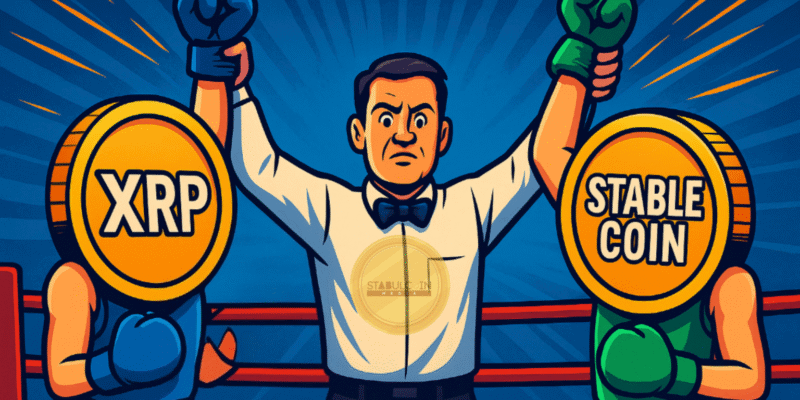The choice between XRP and stablecoins is becoming increasingly important for startups. Both offer faster and cheaper transactions compared to traditional banking, but they work in different ways. The right choice can shape your costs, liquidity, and how customers interact with your business. Recent developments such as the U.S. GENIUS Act regulating stablecoins, Hong Kong’s new licensing framework, and Ripple’s $200 million acquisition of stablecoin payment platform Rail make this decision even more timely.
Understanding XRP
XRP is the native token of the XRP Ledger and is designed for fast, lowcost crossborder payments. Transactions usually settle within three to five seconds, and fees are often less than a cent. Unlike Bitcoin or Ethereum, the XRP Ledger uses a consensus protocol instead of mining, making it energyefficient. For startups dealing with multiple currencies, XRP acts as a bridge asset, allowing instant currency conversion without relying on slow and expensive traditional banking systems.
Understanding Stablecoins
Stablecoins are digital assets pegged to stable values such as the U.S. dollar or euro. Popular examples include Tether (USDT) and USD Coin (USDC). Their biggest strength is price stability, which protects businesses from the volatility common in cryptocurrencies. Regulations are tightening, with the U.S. GENIUS Act (July 2025) requiring stablecoins to hold 1:1 reserves and comply with anti–money laundering laws. Hong Kong has also introduced a licensing regime for issuers, effective August 2025.
XRP vs Stablecoins for Startups: Key Differences
When comparing XRP vs stablecoins for startups, speed is a shared advantage, but stability is where they diverge. XRP’s value can fluctuate with market conditions, which may be risky for longterm holding but is less of a concern for quick settlements. Stablecoins maintain a steady value, making them ideal for payroll, retail transactions, and subscription billing. In terms of liquidity, major stablecoins like USDT and USDC have global reach, while XRP’s liquidity is strongest in established payment corridors. Fees are low for both, but XRP often has a cost advantage for highfrequency crossborder transactions. Regulatory certainty is improving for XRP in some markets, but stablecoins are currently benefiting from clearer legal frameworks in key jurisdictions. Startups focused on compliance and predictable pricing may prefer stablecoins, while those needing ultrafast, currencyagnostic settlements may lean toward XRP.
When to Choose Each Option
XRP is a strong choice for startups with international trade or global client bases, where rapid currency conversion can save both time and money. It’s especially useful in markets where direct currency pairs are hard to access. Stablecoins are better for pricesensitive operations, ensuring that the value received remains constant from payment to settlement. This makes them ideal for ecommerce stores, service subscriptions, and employee payroll.
Why a Hybrid Approach Works and Ripple’s RLUSD Advantage
Many startups are finding success by combining XRP and stablecoins. Stablecoins offer price stability for customer transactions, while XRP delivers fast, low-cost cross-border settlement. This pairing allows businesses to give customers confidence in the value they receive while still benefiting from rapid, global payments. Ripple has strengthened this hybrid approach with the launch of Ripple USD (RLUSD), a fully USD-backed stablecoin issued under a New York trust charter. Pegged 1:1 to the U.S. dollar and backed by cash and U.S. Treasuries, RLUSD brings stability and regulatory compliance directly into Ripple’s payment ecosystem. By integrating RLUSD alongside XRP, Ripple now offers startups a balanced toolkit, stability when holding value and speed when settling across borders. This makes the hybrid model not just a theoretical best practice, but a practical, ready-to-use solution for businesses operating in fast-moving markets.
Final Thoughts
The XRP vs stablecoins for startups decision is less about choosing one over the other and more about aligning your payment method with your business model. Startups prioritizing speed and crossborder efficiency will find XRP appealing. Those focused on price stability and regulatory clarity may choose stablecoins. In many cases, the most competitive strategy is to use both, leveraging each for its strengths.

Comments